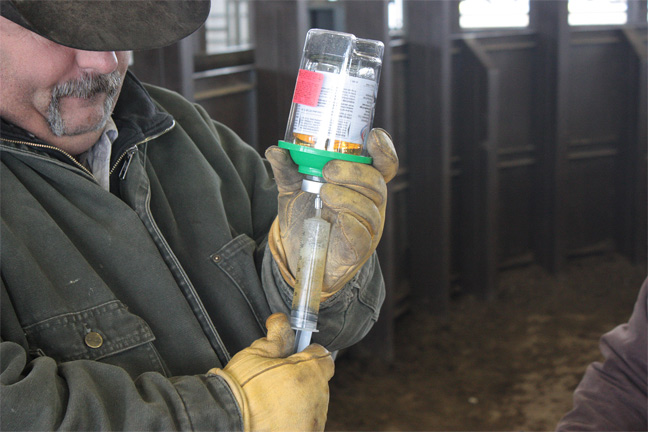
Agricultural News
OSU's Glenn Selk Explains Why Proper Vaccine Storage is Critical to Your Cattle Herd's Disease Protection
Tue, 06 Aug 2019 11:01:32 CDT
 Dr. Glenn Selk, Oklahoma State University Emeritus Extension Animal Scientist, offers herd health advice as part of the weekly series known as the "Cow Calf Corner" published electronically by Dr. Peel and Dr. Glenn Selk. Today, Dr. Selk explains why proper vaccine storage is critical to your cattle herd's protection from disease.
Dr. Glenn Selk, Oklahoma State University Emeritus Extension Animal Scientist, offers herd health advice as part of the weekly series known as the "Cow Calf Corner" published electronically by Dr. Peel and Dr. Glenn Selk. Today, Dr. Selk explains why proper vaccine storage is critical to your cattle herd's protection from disease.
"Each year cow calf producers spend thousands of dollars for vaccine products to immunize calves, replacement heifers, and adult cows and bulls. A vaccine can cost over $3.00 a head, and if not stored properly that vaccine can be rendered in effective. Producers cannot afford to overlook the importance of how they store vaccine and handle it prior to injection.
"Most biological products should be stored under refrigeration at 35 to 45 F unless the nature of the product makes storing at a different temperature advisable (APHIS 2007). Read the insert or box label carefully to discover the recommended storage temperature. If vaccines are not stored within this temperature range, efficacy to the calf can and will be reduced. Killed vaccines are especially susceptible to freezing temperatures. Freezing a killed vaccine will alter the adjuvant or delivery system of a killed vaccine. This, in turn, negatively affects the immune response to the antigen in the vaccine. Modified live viruses (MLV) are more stable but can be in-activated if they are repeatedly cycled above or below the required temperature range (Gunn et al, 2013). Also, once activated by mixing, MLV's effective life will be reduced to 1-2 hours and need to be maintained at the 35 to 45 F. This can be accomplished by only mixing the doses that you will use at that time and use a cooler to maintain temperature while working cattle.
"Researchers from the University of Arkansas and Idaho analyzed the consistency of temperatures for different types, ages and locations of refrigerators over a 48 hour period. They found that only 26.7% and 34.0% of refrigerators were within the acceptable temperature limit 95% of the time, respectfully. Refrigerator location can also effect temperature. Refrigerators located in barns (35.6 F) were colder than in mud rooms (41.72 F) and kitchens (40.82 F). (Troxel and Barham 2009). Temperature within a 24 hour period can also be highly variable for individual refrigerators. Troxel and Barham (2009) demonstrated some refrigerators may take up to 8 hours to cool down to the 45 F, while others will remain too cold varying from 24.8 F to 35.6 F.
"Producers need to be aware of these variations in temperature so they are able to adjust refrigerator temperature as needed. Thermostats can also be very variable from unit to unit, so keeping a thermometer inside works well to monitor and to make adjustments as need. Simple indoor-outdoor thermometers work well to achieve this goal. The outdoor unit can be placed in the refrigerator while the LCD display can be hung with a magnet on the door. This allows temperature to be monitored without opening the door and many models will record the high and the low temperature in a 24 hour period so producers can adjust accordingly. Very inexpensive digital thermometers can be purchased and placed in the refrigerator that will allow the producer to check the refrigerator on those extremely cold nights or very hot days to make certain that the unit is within the desired range. (Source: Can storage of vaccine affect its efficacy?, Mourer, Oct. 30, 2017 Cow Calf Corner Newsletter)."
WebReadyTM Powered by WireReady® NSI
Top Agricultural News
More Headlines...





